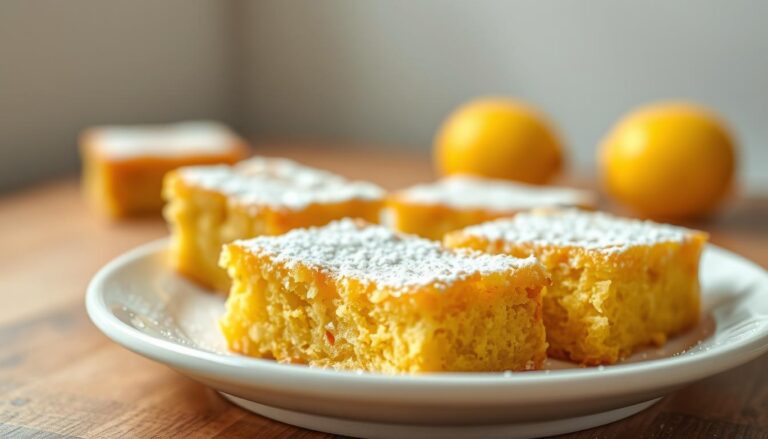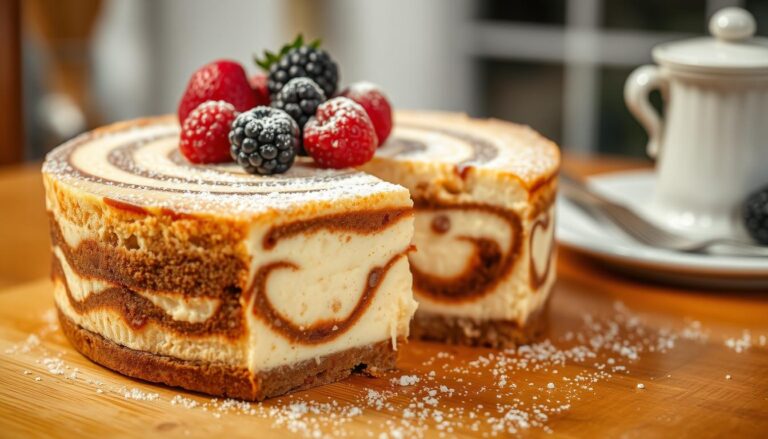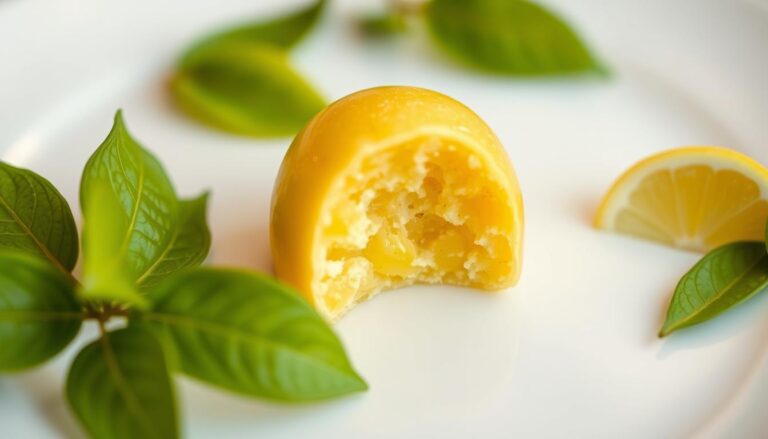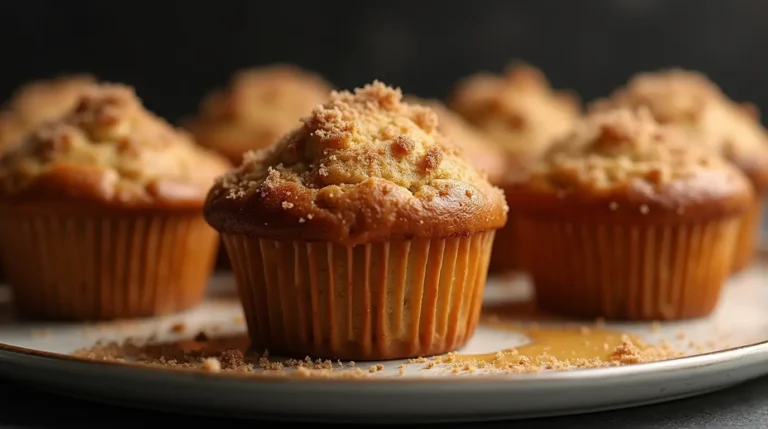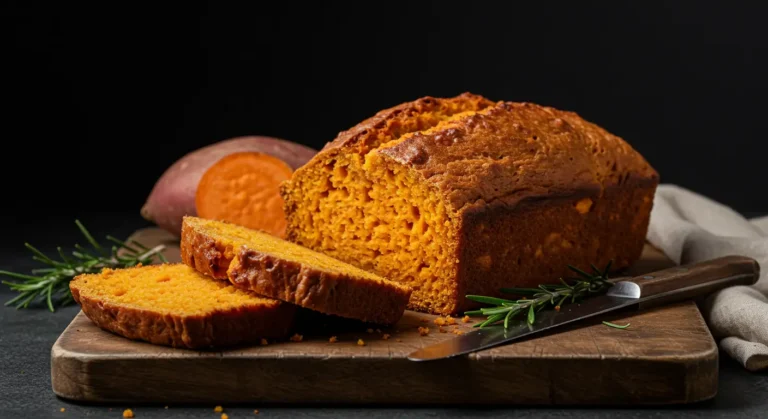Golden Vanilla French Beignets: A Heavenly Sweet Treat
Growing up in New Orleans, I never thought a simple French donuts recipe could take me back to childhood. When those warm, fluffy French beignets arrived, covered in powdered sugar, magic happened. These vanilla French beignets are more than just pastries. They’re edible memories that connect us through their delicate, crispy texture and sweet taste.
Whether you’re an experienced baker or just curious about food, these classic treats offer an adventure. French beignets are not just a recipe; they’re a cultural experience. They bring people together, one delicious bite at a time.
Table of Contents
What Are Traditional French Beignets
French Beignets are more than just a pastry. They’re a delightful culinary experience that captures the essence of French and Creole cuisine. These treats have a rich history, blending European baking with New Orleans’ vibrant food culture.
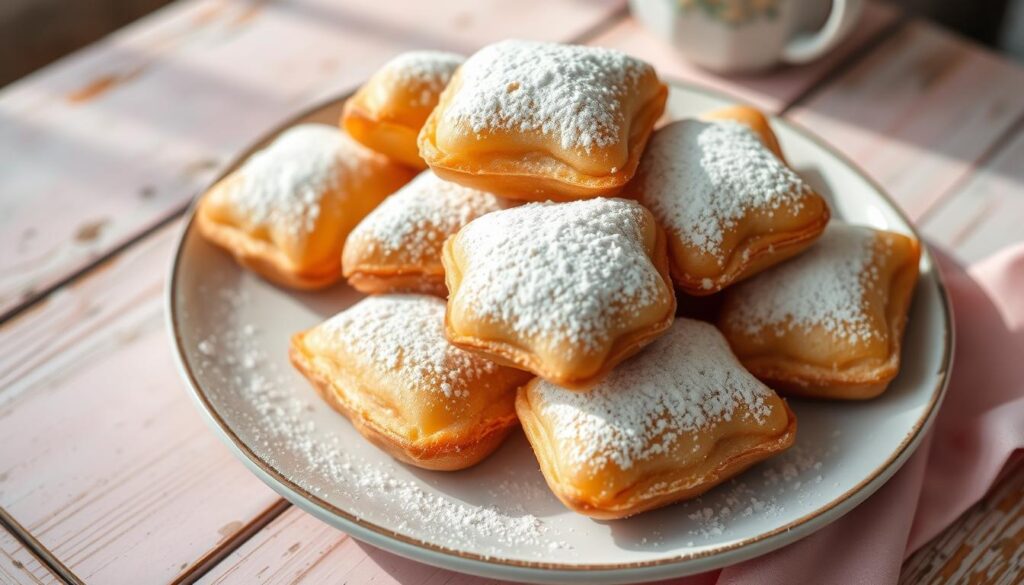
Origins and Cultural Significance
The story of French beignets starts in France, where they were a beloved street food and café staple. French settlers brought them to New Orleans, where they became a cornerstone of Creole cuisine. Their simplicity and delicious taste made them a beloved treat worldwide.
- Originated in medieval France
- Introduced to New Orleans in the 18th century
- Became a symbol of cultural fusion
Difference Between Beignets and Regular Donuts
French beignets are different from regular donuts. They’re square-shaped, lighter, and less sweet. The dough is yeasted, making them airy and delicate, unlike traditional ring-shaped donuts.
| Feature | French Beignets | Regular Donuts |
| Shape | Square | Round/Ring |
| Texture | Light, Airy | Denser |
| Sweetness | Subtle | Very Sweet |
Traditional Serving Methods
Authentic French beignets are served piping hot, covered in powdered sugar. The classic pairing is with café au lait. This combination is perfect, balancing sweet pastry with rich coffee, taking you to New Orleans’ streets.
- Served immediately after frying
- Covered in powdered sugar
- Paired with café au lait
Essential Ingredients for Perfect Vanilla Beignets
Making delicious vanilla french beignets starts with the right ingredients. Your yeast-based desserts need the best ingredients for that perfect texture and taste. This makes these treats hard to resist.
The key to a great vanilla doughnut recipe is using top-notch ingredients. Here are the must-haves:
- Flour: Use all-purpose flour for the best results
- Active Dry Yeast: Fresh yeast ensures proper rising
- Vanilla Extract: Pure vanilla extract provides authentic flavor
- Sugar: Granulated white sugar works perfectly
- Eggs: Large, fresh eggs bind the ingredients
- Milk: Whole milk creates a richer dough
Choosing premium ingredients makes your beignets stand out. Real vanilla beans can add a deeper, more complex flavor to your recipe.
| Ingredient | Quality Impact | Recommended Type |
| Vanilla | Flavor Depth | Pure Extract or Fresh Beans |
| Flour | Texture | High-Protein All-Purpose |
| Yeast | Rise and Lightness | Fresh Active Dry Yeast |
Pro tip: Always use room temperature ingredients for smooth mixing and consistent dough. Your vanilla french beignets will appreciate the extra care!

Kitchen Tools and Equipment You’ll Need
Getting ready for your baking adventure starts with the right tools. Whether you’re new or have baked before, the right gear makes French beignets fun and easy.
Before you start your French donuts, let’s look at the key tools for making tasty vanilla beignets.
Must-Have Utensils for Beignet Preparation
- Large mixing bowl for dough preparation
- Measuring cups and spoons for precise ingredient quantities
- Rolling pin for evenly spreading dough
- Sharp pizza cutter or knife for cutting dough squares
- Slotted spoon for safely removing fried beignets
- Wire cooling rack for draining excess oil
Optional But Helpful Baking Tools
- Stand mixer with dough hook attachment
- Pastry cutter for blending ingredients
- Silicone baking mat for easy dough rolling
- Pastry brush for egg wash application
Temperature Control Equipment
| Tool | Purpose | Recommended Type |
| Deep-Fry Thermometer | Monitor oil temperature | Digital instant-read |
| Heavy-Bottom Pot | Even heat distribution | Cast iron or stainless steel |
| Kitchen Scale | Precise ingredient measurement | Digital with gram/ounce settings |
Having these tools will make your beignet-making better. You’ll get great results every time you bake.
Step-by-Step French Beignets Recipe
Making French Beignets at home is simpler than you think! This easy recipe will show you how to make authentic French donuts. They’ll take your taste buds to New Orleans.
- Prepare the DoughCombine warm milk, yeast, sugar, and flour
- Knead until smooth and elastic
- Let the dough rest for 1 hour
- Roll and CutRoll the dough to 1/4 inch thickness
- Cut into 2-inch square or diamond shapes
- Let squares rest for 30 minutes
- Frying TechniqueHeat oil to 370°F
- Carefully drop dough squares into hot oil
- Fry until golden brown (about 2-3 minutes)
Your homemade French Beignets are best served right away. Dust them with plenty of powdered sugar. A tip: Keep the oil temperature right and don’t fry too many at once.
Enjoy your freshly made French donuts from your kitchen!
Tips for Making the Perfect Dough
Creating delicious beignets starts with mastering the art of dough preparation. These dessert recipes with yeast need careful attention and specific techniques. They transform simple ingredients into magical pastries. Your success depends on understanding the nuanced process of dough development.
Proper Yeast Activation
Yeast is the secret weapon in your easy baking recipe ideas. When activating yeast, follow these critical steps:
- Use lukewarm water between 100-110°F
- Add a pinch of sugar to feed the yeast
- Let the mixture sit for 5-10 minutes until foamy
- Avoid using water that’s too hot, which kills yeast
Dough Consistency Guide
Achieving the perfect dough texture requires precision. Your beignet dough should be:
| Characteristic | Desired Result |
| Texture | Soft and slightly sticky |
| Elasticity | Smooth with minimal resistance |
| Hydration | Balanced moisture content |
Resting and Proofing Techniques
Patience is crucial in developing flavor and texture. Proper resting allows gluten to relax and yeast to work its magic. Cover your dough with a damp cloth and let it rise in a warm, draft-free area. The ideal proofing temperature is around 75-80°F.
Pro tip: Your dough should roughly double in size during proofing. This slow process develops rich flavors and creates those signature light, airy beignets that melt in your mouth.
Frying Techniques for Golden-Brown Results
Mastering the art of frying French Beignets is key to getting that perfect golden-brown treat. Temperature control is your most important skill when making these delightful treats. The right technique can turn your copycat fair food recipes into something truly special.
Oil temperature is crucial for crispy, evenly cooked beignets. You should keep the heat between 350-375°F. A deep-fry thermometer is essential for precision.
- Heat oil slowly and steadily
- Use a heavy-bottomed pot for even heat distribution
- Avoid overcrowding the frying pan
- Work in small batches for consistent results
Here are some key techniques for frying beignets:
- Carefully lower each piece using a slotted spoon
- Flip beignets every 30-45 seconds
- Watch for a uniform golden-brown color
| Frying Stage | Temperature Range | Expected Result |
| Initial Drop | 350-360°F | Gentle Browning |
| Mid-Fry | 365-375°F | Even Golden Color |
| Final Stage | 370-375°F | Crisp Exterior |
Safety tip: Always use caution when working with hot oil, and keep a fire extinguisher nearby. With practice, you’ll become an expert at creating perfectly fried French Beignets. They’ll rival any professional bakery or fair food stand.
Creative Vanilla Beignet Variations and Fillings
Make your vanilla french beignets a true adventure! While traditional beignets are great, trying new fillings and variations can turn them into a hit. This will wow your family and friends.
Sweet Filling Sensations
Make your stuffed beignets a dream come true with these sweet fillings:
- Creamy vanilla pastry cream
- Rich chocolate ganache
- Raspberry or strawberry preserves
- Salted caramel
- Nutella
Seasonal Flavor Inspirations
Use seasonal flavors to make your vanilla french beignets special:
| Season | Flavor Variation |
| Spring | Lavender and lemon curd |
| Summer | Fresh berry compote |
| Fall | Pumpkin spice cream |
| Winter | Spiced apple filling |
Unexpected Savory Alternatives
Wow your guests with these creative savory beignet ideas:
- Goat cheese and herb filling
- Bacon and cheddar stuffing
- Spinach and feta mixture
- Jalapeño and cream cheese
Creating unique vanilla french beignets is all about being creative. Don’t hesitate to try new things and find your own special recipe!
Storage and Reheating Guidelines
Keeping your homemade vanilla doughnuts fresh is key. They can stay delicious with the right storage and reheating. Here’s how to keep your easy beignets recipe tasting great.
For short-term storage, follow these tips:
- Store beignets at room temperature in a loosely covered container
- Consume within 24 hours for optimal freshness
- Avoid sealing in airtight containers to prevent moisture buildup
Freezing is a great option for longer storage. Wrap individual beignets in plastic wrap before putting them in a freezer-safe bag. They can stay frozen for up to 2 weeks, keeping their texture.
Reheating your beignets needs gentle care:
- Preheat oven to 350°F (175°C)
- Place beignets on a baking sheet
- Warm for 3-5 minutes until heated through
- Dust with fresh powdered sugar before serving
Pro tip: An air fryer is great for quick reheating. It keeps the doughnuts crispy. Always serve them warm for the best French pastry taste.
Conclusion
Your journey into French Beignets has been a fun mix of flavors, techniques, and traditions. You’ve learned how to make authentic vanilla French beignets in your kitchen. This is thanks to understanding their cultural roots and mastering frying.
These easy baking recipes are more than just treats. They connect us to classic cooking and bring joy to our loved ones. Whether you’re adding powdered sugar or trying new fillings, each batch is a chance to show off your cooking skills.
Enjoy baking and remember, making perfect French Beignets takes time. Start with the basic recipe and then try new things. Your kitchen will fill with the amazing smell of fresh pastries, drawing in friends and family to enjoy your creations.
Now, you’re ready to turn simple ingredients into amazing French beignets. These will impress and delight everyone who tries them. Happy baking!
FAQ
What makes French beignets different from regular donuts?
French beignets are lighter and more airy than regular donuts. They’re square-shaped and fried. They’re covered in powdered sugar, thanks to New Orleans and French traditions.
Do I need any special equipment to make beignets at home?
You’ll need a deep-fry thermometer and a heavy pot for frying. Also, a rolling pin and sharp knife or pizza cutter are necessary. A stand mixer helps but isn’t required.
How long can I store homemade beignets?
Enjoy beignets fresh for the best taste. Store them in an airtight container at room temperature for 1-2 days. Freeze them for up to a month and reheat in an oven or air fryer.
Can I make beignets without yeast?
Yeast is key for the light, airy texture of beignets. Quick bread alternatives won’t give you the real French taste and texture.
What are some creative filling options for beignets?
Try fillings like vanilla cream, chocolate ganache, or fruit preserves. You can also use savory fillings like cheese or herbs. Make sure to inject the filling after frying.
What type of oil is best for frying beignets?
Use neutral oils like vegetable, canola, or peanut oil. They can get hot enough for frying without adding extra flavor to your beignets.
How can I ensure my beignet dough rises properly?
Make sure your yeast is fresh and active. Use warm liquid when activating it. Let the dough rise in a warm, draft-free area. The best temperature for proofing is 80-85°F.
We’d Love to Hear Your Sweet Feedback!
There are no reviews yet. Be the first one to write one.


